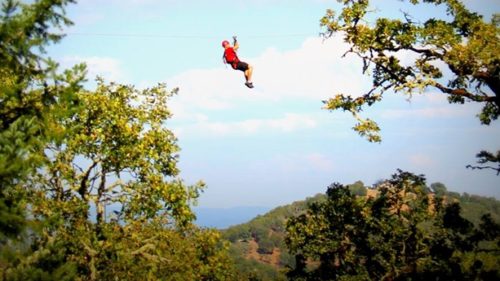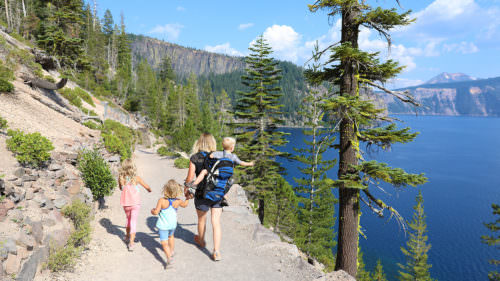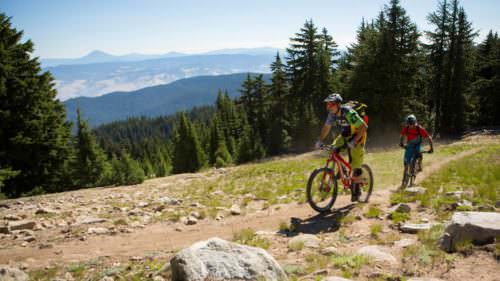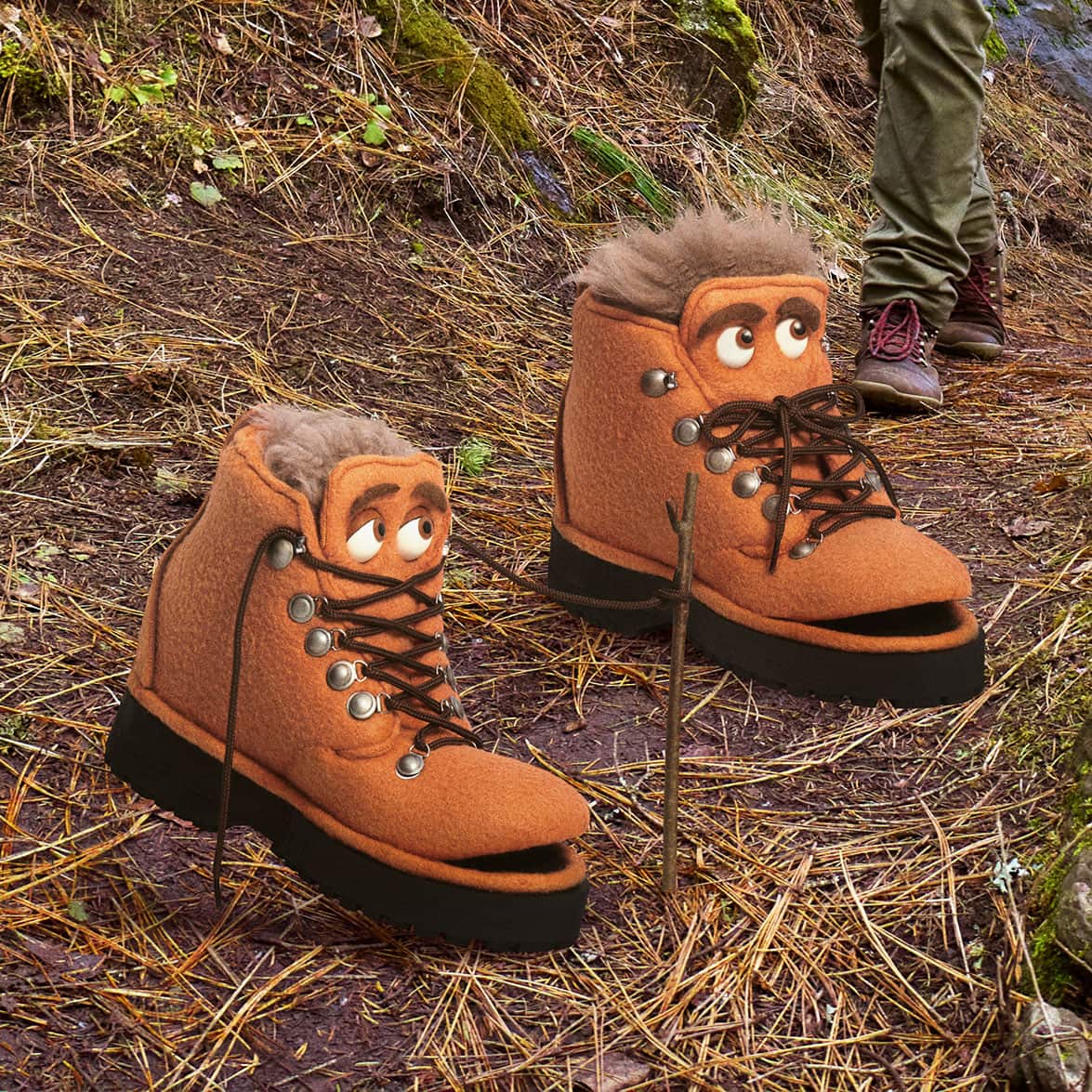If you’re looking for an outdoor adventure that will take your breath away, journey to Southern Oregon where two stunning landscape features are home to hundreds of wildflower species. Take a hike to the top of Lower Table Rock in Jackson County, one of two Table Rocks that are unmistakable and prominent landmarks that some call Oregon’s “Islands in the Sky.”
On a day too nice to stay indoors, explore an Oregon wonder many have missed: where shooting stars, fawn lilies and red bells are always by your side. There‘s also plenty of elbow room for brushing up on botany and wildlife — like wild turkeys — across thousands of acres at Lower Table Rock near Medford.
Molly Morison, The Nature Conservancy’s Southwest Oregon stewardship coordinator, and Molly Allen, Bureau of Land Management environmental education specialist, are teachers who guide “educators-in-training.” Today, their pupils are Melissa Clement, Mary Sue Walker and Kelly Gaudin. The three women will soon teach groups of school children along the nearly two-mile trail to the top of Lower Table Rock. They will accompany up to 5,000 students each spring and summer.
“From down here on the trail, you can see the gently sloping sides,” explains Allen. “This is where the softer sediment is eroding from Lower Table Rock. It’s a really unique land form that’s so different from anything else around Southern Oregon.”
Seven million years ago, a nearby volcano erupted and filled the ancient Rogue River Valley with lava. Over the millennia, ancient rivers eroded the landscape but left these two plateaus behind. Now each Table Rock (Upper and Lower) rises more than 800 feet from the valley floor.
The Table Rocks are protected by the BLM and The Nature Conservancy as official Areas of Critical Environmental Concern. “That designation means that it can’t be developed,” says Allen. “There cannot be resource extraction like logging or mining here because of the special plants and animals that live here.”
At the top of Lower Table Rock, it is easy to see that the plateau is wrapped by ancient basalt and offers eye-popping views of the valley floor below. Down on the ground, you can hike to scores of vernal pools that fill with spring rain. “These pools are like fascinating aquariums,” says Morrison. “They are full of small invertebrates including the star of the show, Fairy Shrimp or Vernal Fairy Shrimp, that are cute little critters.”
There are more than 200 wildflower species growing on Lower Table Rock, including the extremely rare dwarf-wooly meadowfoam. “That flower only grows on the top of the Table Rocks and nowhere else in the whole wide world,” says Morrison. “The Lower and Upper Table Rocks are like islands in the sky, iconic features for the region … landmarks of natural and cultural history that are dearly loved by residents and visitors alike.”
The best is yet to come for the springtime wildflower show at Oregon’s islands in the sky — the peak period stretches from early April until late May. In addition, free guided hikes are offered to visitors in April and May. Guided three- to five-mile round-trip hikes along a moderate grade trail generally last three to five hours. Anyone is welcome to sign up, but reservations are required. Space is limited to 20 individuals. Contact the Medford District BLM at 541-618-2200 to reserve a spot.
Travel Oregon is involved in educating visitors at the Lower and Upper Table Rocks too. The organization’s Forever Fund recently provided a grant to The Nature Conservancy to replace aged information kiosks. The new signs will provide both natural and cultural history and geologic facts about the unique Table Rocks. Oregonians and visitors to the state can contribute to the Forever Fund as a way to say thanks and take care of the places we love to visit and explore.



